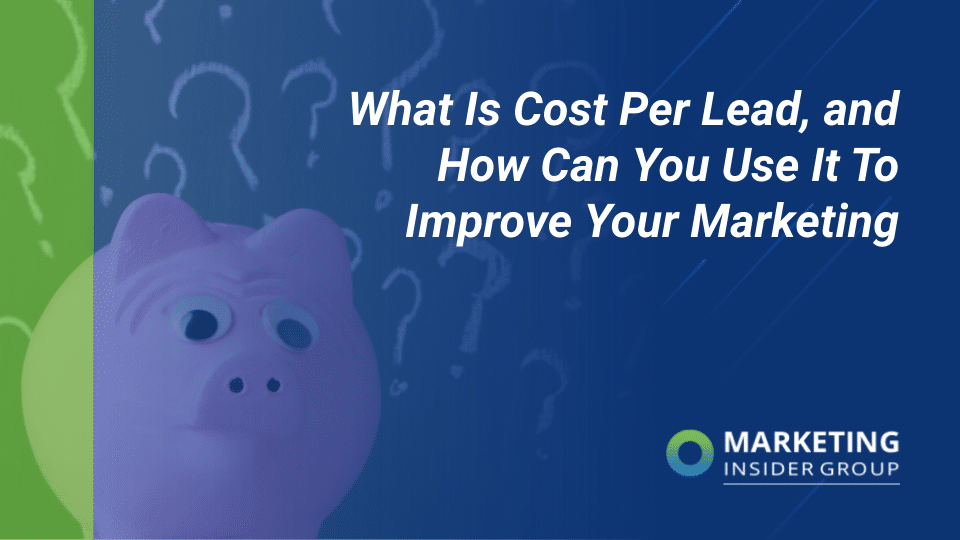
Content Gating and the Use of Registration Forms in Lead Gen
When most people encounter an online registration form from a company they either don’t know or who they feel hasn’t earned the right to ask for their information, they either abandon the form or they provide incorrect information. Maybe you do the same?
One of the biggest challenges in Online Marketing is the over-abundance of late-stage, product-specific and gated content.
This content is great for buyers who are ready to “buy now.” And marketers should employ strategies to identify and capture every one of these leads that we can for our businesses.
The problem is that not everyone in the buying process is ready for this type of content. Nor do they trust you enough to share their personal information. In fact, there is a reason the so-called “marketing funnel” is bigger at the top representing early-stage buyers: there are many more of them than there are late-stage buyers.
And so the question arises: which content should I make “registration-required” in order to maximize my lead capture while also reaching the largest possible audience of potential buyers?
What is Content Gating?
For definitional purposed, “gating” refers to the process of requiring someone to fill out a registration form in order to view or download a piece of content.
The registration form can request just one or 2 pieces of information such as email address and your name. Or they can go as long as your imagination allows, requesting items such as title, company, address, phone numbers, opt-in for future communication, if you are a decision-maker, if you want to be contacted by a sales person, name of your first-born child, favorite color and more.
The “Creep Factor” in Content Gating
In this Entreprenour article, Erika Chickowski (@ErikaChick) recounts how David Meerman Scott likens gating content to asking for someone’s phone number at a singles bar without even introducing yourself. She also cites 2 separate sources that researched the subject and found that un-gated content is 20 to 50 times more likely to be downloaded. Think about that: instead of getting 2,000 downloads of your whitepaper, you could get 100,000!
4 Factors to Consider For Content Gating
My friend Lauren Goldstein (@LaurenOnDemand) VP of Strategy at B2B Marketing agency Babcock & Jenkins shared this list from SiriusDecisions of 4 considerations for content gating:
- Objectives: what is the goal of the content?
- Audience: who is the intended audience?
- Value: is it a 20 page research brief or a 400-word blog post? Each has a relative value for your audience.
- Uniqueness: can your audience get similar content somewhere else without a form getting in the way.
Generate Demand With Content Marketing
Joe Chernov, VP of Content Strategy has offered up a whole deck on content and demand generation. I totally agree with him when he says that content has tremendous value when mapped to the right stage of the buying process. He suggests focusing on content that advances the buyer in their journey.
Joe’s Eloqua colleague Jesse Noyes (@NoyesJesse) also has a great review of the options in this post where he quotes Chris Jablonski (@cjablonski), author Emerging Tech blog on ZDNet, who provided the following formula: 10% to 20% fully gated content, 20% to 30% name and email only, and 50% to 70% completely free.
The Pros and Cons of Content Gating
This article from Hubspot does a great job of discussing the main reasons why content gating is so hotly debated. There are good reason to gate and good reasons not to gate content behind registration forms.
The benefits of un-gated content: The main reason to “set your content free” is that more people are likely to see it and they are also more likely to share it. This provides positive search results (SEO) for your site, more inbound links or “referral links” from other websites and ultimately more traffic and visitors to your website. The more visitors you get, the more opportunities you have to convert them to leads and customers.
The downside to un-gated content: Includes lower quality leads, unpredictable lead volumes, fewer conversions and less information marketers can use to nurture buyers with deeper content that is more relevant to their needs.
Hubspot recommendation: consider content by buying stage.
Deliver The Right Content And You Will Get Customers
In my post on how to sell-in Content Marketing, I talk about how anyone can do the simple math do figure out how to win more customers with early-stage content.
I’m not sure I did a great job explaining it, but the bottom line is found in what I mentioned above: un-gate your content and it will get exposed to 20 to 50 times more people. If you offer content that brings them to the next stage of the buying process, you are already converting leads you would have never found before. Because these prospects were getting the information they need from somebody else.
In the end, I think the answer lies in the fact that you cannot make gating decisions in a one-off fashion. You need a content strategy that offers the right content at the right time to reach the largest possible audience, to engage them with relevant content and to convert them into leads.
If you are looking for a much more eloquent answer, check out “How do you decide what content should require registration or not? Q&A discussion on Focus.com including some of the best content marketing minds in marketing such as Ardath Albee (@Ardath421), Michele Linn (@MicheleLinn), Doug Kessler (@DougKessler), Joe Chernov (@JChernov), Stephanie Tilton (@StephanieTilton) and more.
Follow me on Twitter @BrennerMichael.







Hi Michael,
Considering the buying stage is an interesting point in deciding whether to gate content or not –
As you said, blatantly asking for someone’s name, address and email without even first introducing yourself is no way win hearts. It’ll drive more people away in fact.
Developing a strategy for the process is crucial – why are they giving you their information, where are they going next in the process and what can you offer to them that will completely delight them.
Thanks for sharing!
~Christine
Great post, Michael, on an age-old question – to gate or not to gate.
I like the idea of offering mostly ungated content, but having a simple gave for some of the highest value content like in depth white papers or analysts reports. I also agree on simple forms for most.
Love your blog, Michael., Keep up the great work.
Jeff Ogden, the Fearless Competitor
Creator and Host of Marketing Made Simple TV
https://www.marketingmadesimple.tv
Terrific post, Michael. As I mention in the Focus.com discussion you point to, I think one of the biggest mistakes companies make is basing the gating decision on how much effort they put into developing a content asset. A prospective buyer frankly doesn’t care that your company spent 2-4 times longer preparing an early-stage white paper than a later-stage case study. Their comfort level sharing their information is more often based on how much time they’ve spent digesting that organization’s content (i.e., less willing on the first date, more comfortable after the 2nd, 3rd, or 4th). That’s not to say people don’t assign more value to certain types of content, but they’re still hesitant to hand over contact information early on, knowing they’re likely to get hounded as a result.
I wrote a post earlier in the year for the Content Marketing Institute on this very topic. Check it out for stats into what info tech buyers are willing to share in exchange for certain types of content and at what point they’re willing to do so: https://www.contentmarketinginstitute.com/2012/03/content-registration-forms/
Thanks Christine, as you said it is all about the strategy and the process to execute that and not a single event.
Thanks Jeff, I really appreciate the support and congrats to you on the recognition you’ve received as well!
Stephanie, great point. You provide another example of the issue of company-centered vs. customer-centered decision making. A customer-focused organization is better for business because it better serves the customer, who in turn is more willing to become a customer, and a referrer of more, new customers.
And those stats are great. 80% are probably or definitely not willing to share their information with a company they are not familiar with! I also like the % of people who do not expect to be followed up and who would be annoyed if the vendor follows up.
Thanks so much for your leadership on this topic!
Amen. 2.1 Million IT buyers are nodding their heads in agreement.
IT buyers and IT vendors on gated/ungated content
https://community.spiceworks.com/topic/79863-registration-free-white-papers
IT buyers on their contact info
https://community.spiceworks.com/topic/226574-sign-up-for-a-it-print-magazine-or-website-and-you-get-a-free-sales-call
Thanks Kenny, It’s been a while since 2.1 Million people agreed with me! Most days I’m happy when just my 1 person does. 😉
Great post, Michael. You captur all the issues around gating without over-simplifying.
One way to decide whether to gate a piece: run an A/B test, one landing page with a form against the same page without the form.
Conversion will be higher without the form, but until you know how much higher, you can’t decide if the upside is worth the penalty.
Would you sacrifice the data capture for ten percent fewer downloads? How about sixty percent? The debate becomes much clearer when you’ve got the numbers.
This topic is quite relevant. If you’re in sales, you want every opportunity to capture a name, which leads to lead nurturing and a possible opportunity. We believe forms have its place in context of the quality of the content. Consider:
a. Forms are a no-brainer when it comes to offering content via paid search, online display, or social media promotion via landing pages.
b. Website. If your content has great value, I urge clients to summarize the content (Or tease it) with an option to get the entire white paper with a form.
You really have to study your analytics and your conversion funnel. In my view, all lead generating websites need to have a call-to-action, otherwise your KPIs are engagement metrics- average time on site, pages per visit, etc. Those metrics don’t necessarily equate to media or keyword analysis, but do tell a story of your website is engaging enough for audiences.
It does come back to goals of a website. If you’re using a website to generate leads into the funnel, you need a sound conversion architecture.
That’s a point-of-view of a lead generator and a conversion-focused professional, me. It’s a great topic to debate.
Paul Mosenson
NuSpark Marketing
https://www.nusparkmarketing.com
Great tip Doug. In order to conduct the test, the un-gated content needs a follow-on call to action. So it’s great to get 20-50 times more views on a piece of content, but there has to be something to incite action to the next stage. “Attend a webcast” “Explore our solutions” “Sign up for a free demo” all these things are valid calls-to-action for “free” content.
With this, you can see: 1) how many gated content registrations were completed and 2) how many conversions do you get with un-gated content to the follow-on calls-to-action. You can compare these 2 and see their relative value. So, for example, how many of the registrations appear valid vs. how many webinar attendees who actually attended or stayed on for more than 50% of the webcast.
I think it’s important to think through these validation and comparison points because too often, our bias can quickly come through as we jump to the foregone conclusion that supports our personal goals.
Thanks Paul, every website should have a conversion path in my opinion. I’m with you that we need to drive business goals and outcomes!
Great post Michael!
Thanks for the nice mention…but more importantly, thanks for the great insights.
In this buyer-centric world…over-gating can leave a negative impression of your brand AND force a potential prospect to find information elsewhere (which may mean never seeing him again). The question of “to gate or not to gate” is more sensitive now than ever. Err on the side of generous, and gain the exposure you mention above.
Thanks for the great insights. Cheers, Lauren
Thanks Lauren, I completely agree. I think a good rule to follow is to prioritize the following objectives and metrics: 1) attention (reach), 2) engagement (shares, comments) and conversions (leads) in that order.
Great post Michael!
I also think we need to consider the social visitor potentially visiting on a mobile device. The screen is small the keyboard is horrible – let’s not force these people through the traditional gate. If I’m in twitter and a friend posts a cool white paper by a vendor I’ve never heard of – ideally I don’t want an abrupt gate to get the content. regardless of it its early stage content or not – lets approach a brand new visitor and let them in for free or since they are social let them socially sign in for the content instead of filling out the form. Then we can use progressive form technology to learn more about them over time assuming they continue to express interest asking for more content.
Great post I’ll check out the focus session. Thanks!
GREAT point Bryan, forms + mobile = BAD! (generally).
I find myself searching Google to find a back door to access gated content without having to register. The result is either I find the content without having to register or I find a similar piece of content with the same topic/search phrase that may be just as good or better.
Thanks Chris, I think many of our customers have found that trick useful as well.
It would be interesting to tie analytics and engagement to content, call to action and conversions. For example: as someone consumers your content over time they will be willing to self identify (as opposed to being “tracked”) either by giving some information in exchange for additional/more in-depth content but also the ability to engage with someone with the domain expertise.
The analytics piece is comprised of tracking anonymous readers with respect to what content they consumer the paths they take prior to filling out a form. This is where content type, get’s tied to content consumption and conversion. This is something I’m exploring with software/app developers from Silicon Halton’s Peer to Peer software engineering group.